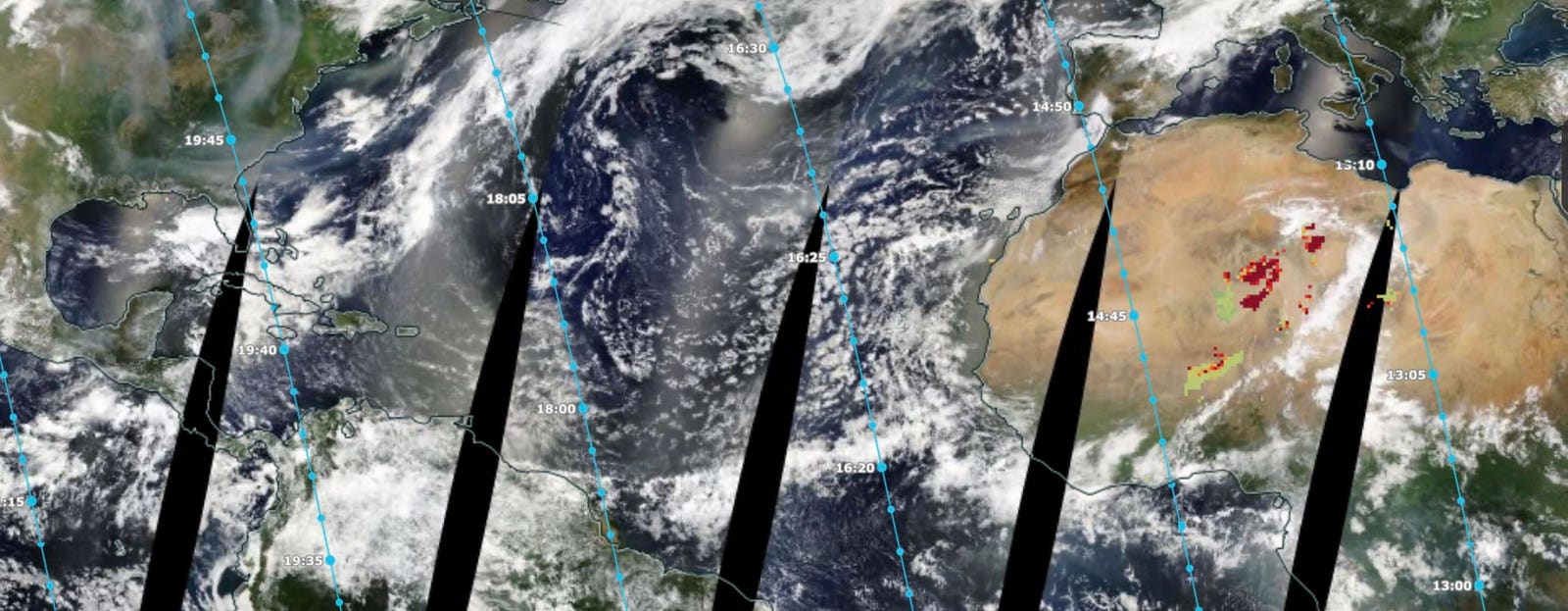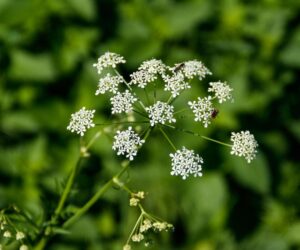An image captured on June 2nd, 2025 revealed African dust over the Atlantic Ocean and smoke from … More
In recent days, a quick look up into the skies of the United States could yield anything from Canadian wildfire smoke to the Aurora Borealis. African dust will be added to the list over the next few days. Here are four quick facts about the African dust approaching the United States this week.
It’s More Common Than You Think
June 1st is the start of the Atlantic hurricane season, but atmospheric scientists also watch for the Saharan Air Layer too. Often referred to by scientists as the SAL, NOAA defines it as, “A mass of very dry, dusty air that forms over the Sahara Desert during the late spring, summer and early fall.” In the satellite imagery taken on June 2nd, source regions are evidence over the Desert, and hazy plumes of dust are evident over the Atlantic Ocean. As an aside, plumes of smoke from Canadian wildfires are evident over the U.S. too.
Jason Dunion is a hurricane researcher at the University of Miami and is also affiliated with NOAA’s Atlantic Oceanographic and Meteorological Laboratory. In a NOAA “101” about the SAL, he said, “SAL activity typically ramps up in mid-June and peaks from late June to mid-August, with new outbreaks occurring every three to five days.” The outbreaks can transport dust as far west as Texas and Central America.
Saharan dust exiting the African Continent in 2020.
So why does this happen? It’s actually related to some of the triggering mechanisms associated with peak season hurricane activity. Dunion went on to say, “SAL outbreaks can form when ripples in the lower-to-middle atmosphere, called tropical waves, track along the southern edge of the Sahara Desert and loft vast amounts of dust into the atmosphere.” Those tropical waves, under the right conditions, can develop into tropical cyclones or hurricanes.
It Affects Hurricanes
Speaking of hurricanes, the SAL can be so thick and expansive that it has effects on tropical systems. Scientists believe the dry, dusty, and warm SAL impacts tropical storm development, but like most things in science, it’s complicated. Nearly two decades ago, NASA and conducted a large experiment called the NASA African Monsoon Multidisciplinary Analyses (NAMMA) campaign. The goal was to understand how the dust aerosols affect tropical development. That effort and others have mostly concluded that African dust inhibits development of tropical activity. Hurricane development can be impacted by a dry air in the middle levels of the atmosphere, which is often where you find the SAL. Developing systems can also be torn apart in the early stages of development by wind shear associated with strong plume of air (an easterly jet) often associated with Saharan dust storms. The dust itself is also problematic too. It can help to stabilize the atmosphere and prevent the ocean water from heating up. One complication is that some studies have indicated that dust aerosols can serve as cloud “seeds” and invigorate cloud development, but most scholars believe the negative impact dominates. Overall, a 2019 study found that hurricane activity increased in the North Atlantic with reduced dust loads.
Water vapor imagery on June 2nd, 2025 showing areas of mid-level dryness associated with Saharan … More
It Can Be Helpful And Harmful
I remember visiting Puerto Rico during my time at NASA. One topic that came up was related to African dust. I was told that the dust from African can be quite helpful in fertilizing soil and beach-building in places like the Caribbean Islands and parts of Amazonia.
The Saharan Air Layer over the Caribbean region in 2020.
However, studies have also indicated that the dust can cause health problems ranging from upper respiratory issues to allergies. During a 2024 dust outbreak, the Caribbean Public Health Agency issued a press release that warned, “Saharan dust worsens air quality and increases the levels of particulate matter in the air. This can be hazardous, especially to small children, older adults and people with underlying lung conditions and chronic cardiopulmonary diseases.” Additionally, at least one study found that harmful bacteria can often “catch a ride” in the SAL plumes too.
It May Produce Awesome Sunrise And Sunset Views
Thanks to physics, the African dust can make for brilliant sunrises or sunsets. Because of the way light scatters with larger dust particles when the sun is low on the horizon, the longer wavelengths in the color spectrum like reds and oranges are quite vibrant. Hopefully, you can enjoy clear skies (and avoid “dirty rainfall) so that you can see one of the awesome sunsets or sunrises.
(GERMANY OUT) Sonnenaufgang ueber Berlin mit Staubschleier. (Photo by Meißner/ullstein bild via … More







